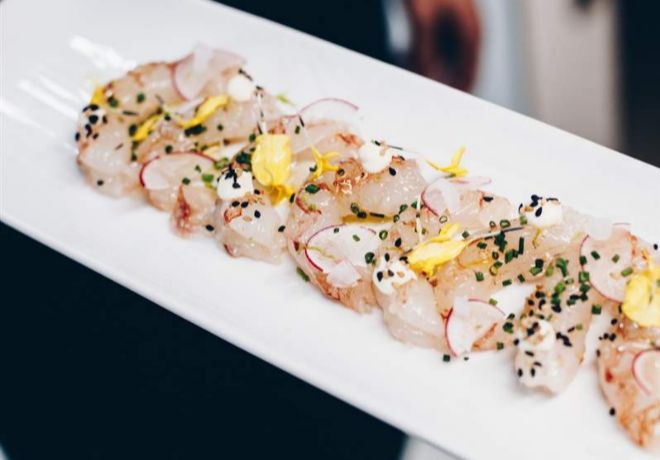The cultural, tourist and gastronomic Santander come together to give rise to the perfect trip. A tour of the capital of the Cantabria region to discover in a gastro key, one of the places that will revolutionize the gastro-tourist landscape
Santander is about to explode . The combination of its cultural offer, its wonderful landscapes and the boom that its gastronomy is experiencing promise to put it on the map as one of the mandatory cities to visit from 2020 onwards. And, when you're in Santander, it doesn't matter the rain or the overcast skies because the sun always ends up rising.
Although the first archaeological remains of the city date from the first century and are Roman, Santander is remembered for being part of the Four Villas of the Sea next to San Vicente, Laredo and Castro Urdiales. A title granted by Alfonso VIII in 1187, constituting it as a town of abbess and making its shipyards a strategic point for the construction of the fleet of the Kingdom of Castile.
Nature in all its corners
The spectacular bay, where the Botín Center is located -in a land that has been won to the sea-, has been named as one of the most beautiful in the world by the Club of the Most Beautiful Bays in the World. Going through your walk and reaching the Magdalena Palace has no waste day or night.
It is also another magnificent route, the one that goes from the Sardinero to the Lighthouse of Cabo Mayor : on the edge of the beach, the cliffs and between wonderful mansions and gardens. This walk is made through a small path, known as Mataleñas: simple, pleasant and quiet, with the advantage that most of the walkers that pass through there are locals, so it is not usually filled with tourists.
Snack Architecture
Traditional markets are one of the key places in Santander cuisine. The main one is the Mercado de la Esperanza which, opened in 1904 and located behind the Town Hall in a modernist building of stone, iron and glass - designed by the architects Reynals and Moya -, has become one of the largest food markets from Cantabria.
The Mercado del Este, built in 1842 by Zabaleta in the format of a commercial gallery, has its interior divided into interior galleries to which a perfect exhibition hall has been added to rest viewing your works of art before or after making the purchase.
But in Santander there are not only markets in which to enjoy gastronomy. The whole city is full of corners where to eat some of the best northern dishes . Santander gastronomy centers its bases on tradition, on the product of both land and sea. That is why their fish and shellfish, from the Cantabrian, become more relevant in their letters. Although it should be mentioned that their meats are not far behind.
From the hearth to the star
It all starts with a vermouth in one of those spaces with a hearth such as Vermutería Solórzano , founded in 1941, accompanied by good gildas, traditional rabas or stewed ear skewers, among many others. Pecking there, sitting in front of the sun, becomes one of the best hobbies of the weekend.
The fishing taverns of the Pesquero neighborhood , host all kinds of traditional tascas and with an atmosphere of yesteryear in which you can taste the Santander cuisine of a lifetime. The same happens in the historic center, where in addition to traditional restaurants you can try new kitchens with northern essence such as Desur Days , in which you can taste the eclectic cuisine in the middle of one of the most charming neighborhoods in Santander. Or one of the most mythical restaurants in the city whose cuisine is current but maintains the essence of the past is the Bodega El Riojano : a place where art and gastronomy merge to make all the senses enjoy.
Nor are gastronomic or author restaurants like El Serbal , one of the essentials of the city where Roberto Terradillos treats the raw materials of the place as if they were gold in cloth. His work, through his dishes, puts the value of the roots of the gastronomy of his land and brings out a product that surprises by exquisite flavor. The same happens in any of the restaurants in the surrounding area: El Nuevo Molino (Puente Arce), based on local products; La Solana (Ampuero), in which the Cantabrian cuisine is currently presented and very close to seasonal products; The Bicycle (Hoznayo), in which an interpretation of the Cantabrian and Basque cookbook is made; Annua (San Vicente de la Barquera), combining Cantabrian and Latin American cuisine; and the Amos Arbor (Villaverde de Pontones), which explores the memory of its region and recovers the flavors of yesteryear. Deserved Michelin stars for this Cantabrian capital.
Several kitchens, in the same space, that find their place between mountain stew, rabas, sardines, Santoña anchovies and everything that is produced in the Valley of the Pas .
According to the criteria of
Know more
Comments
This news has no comments yet
Be the first in give your opinion
0 comments
